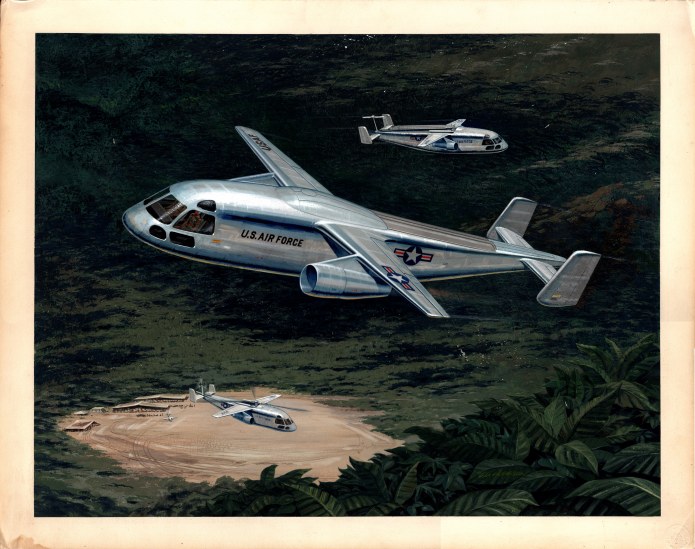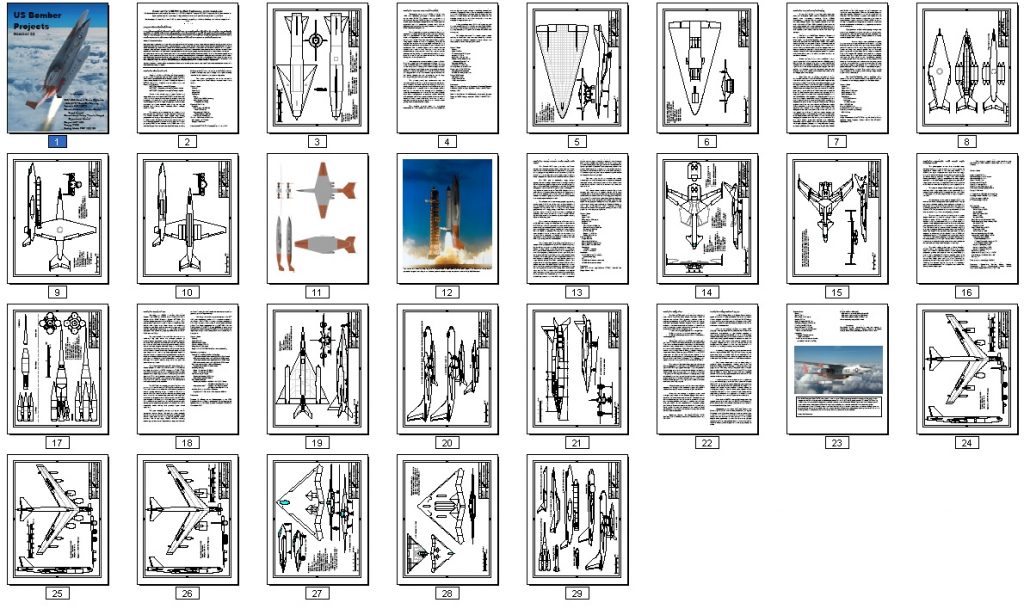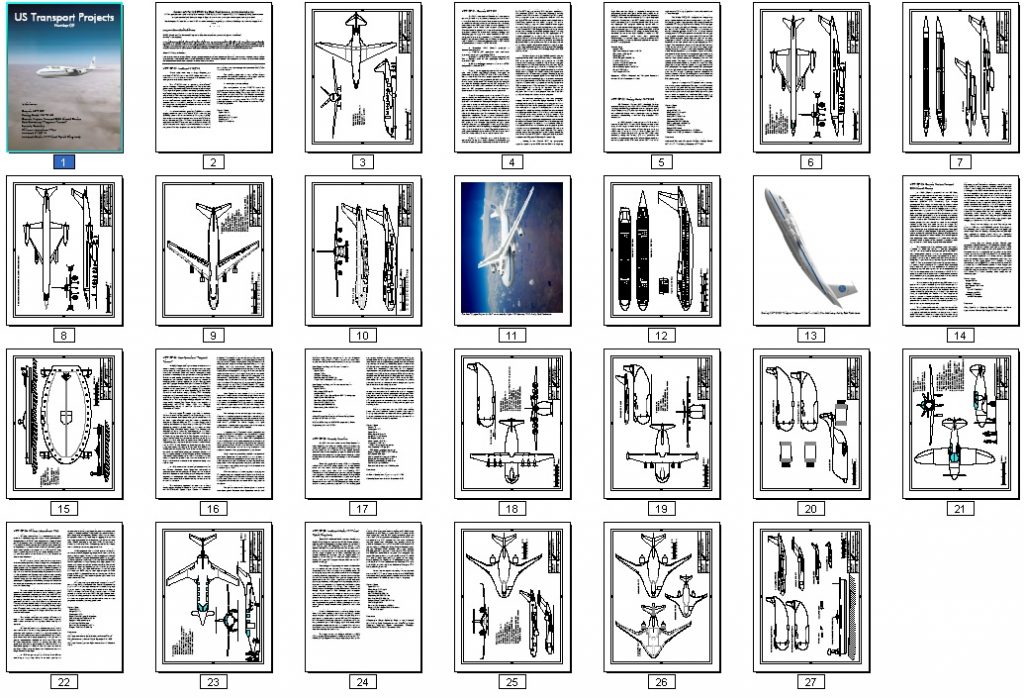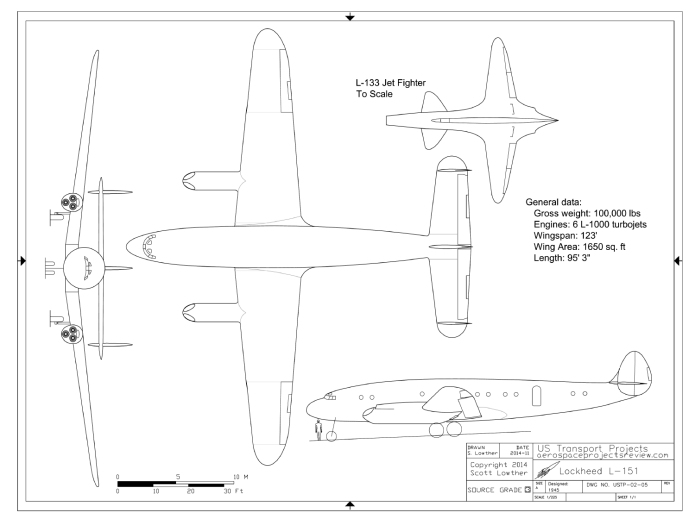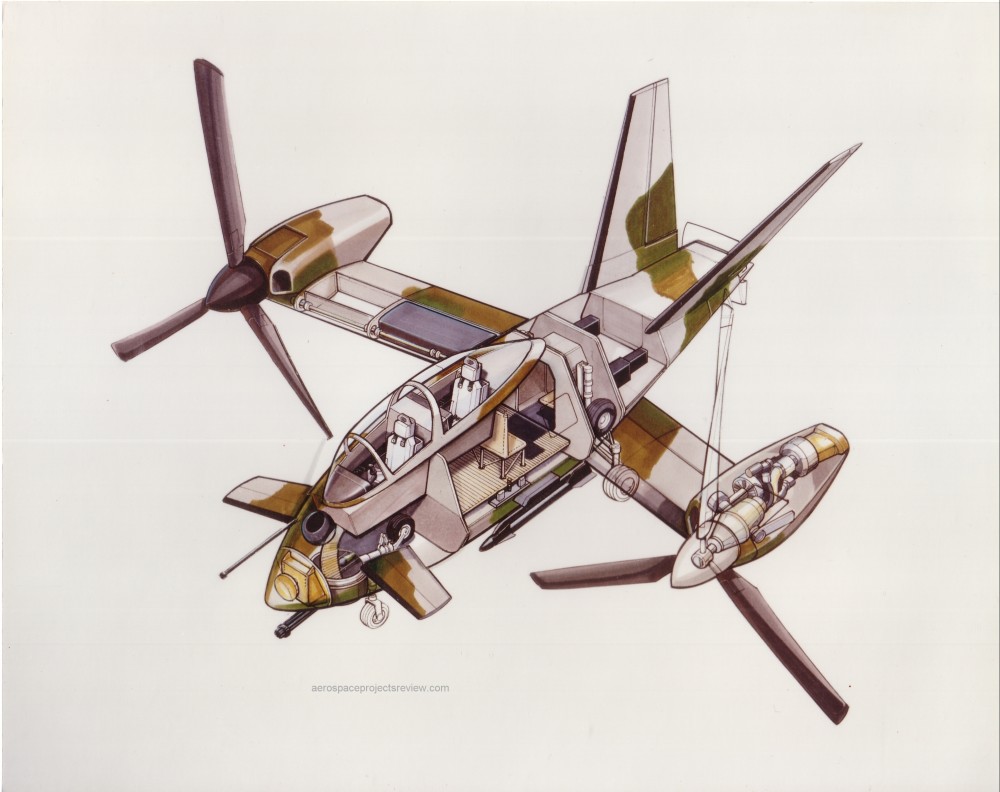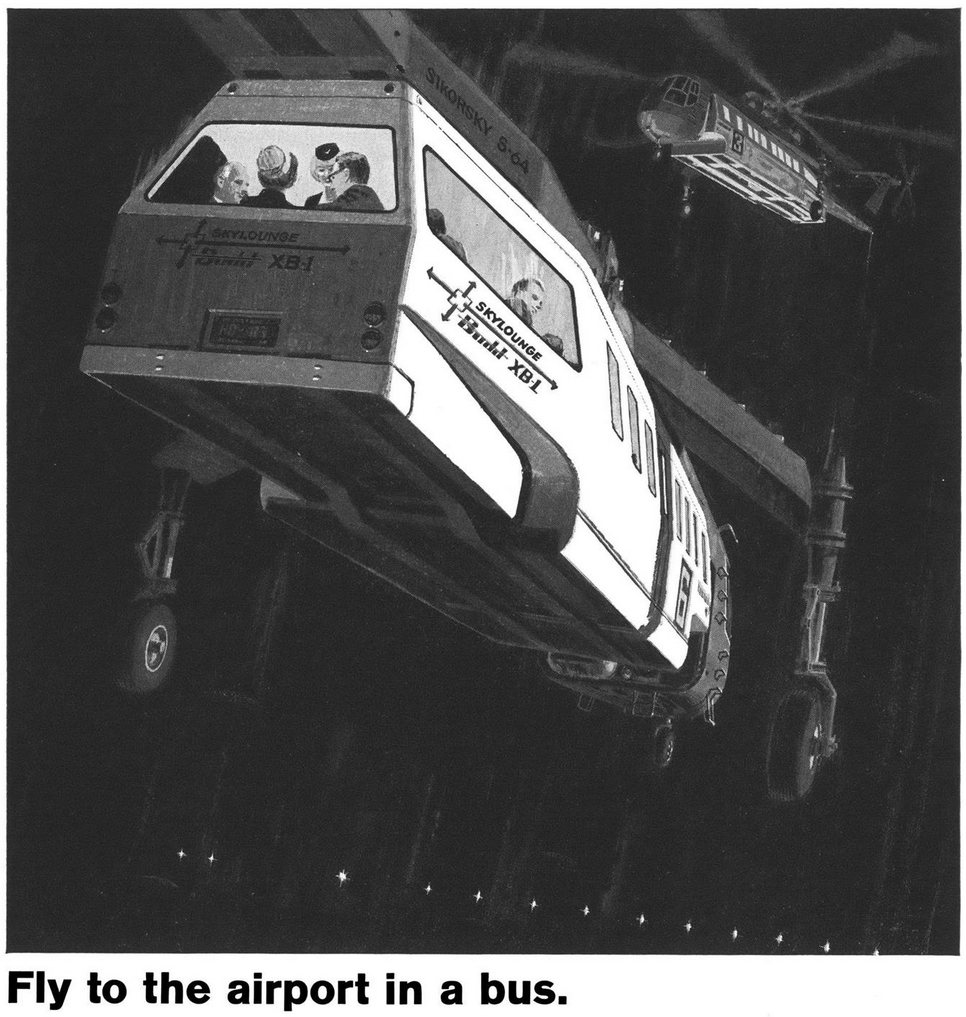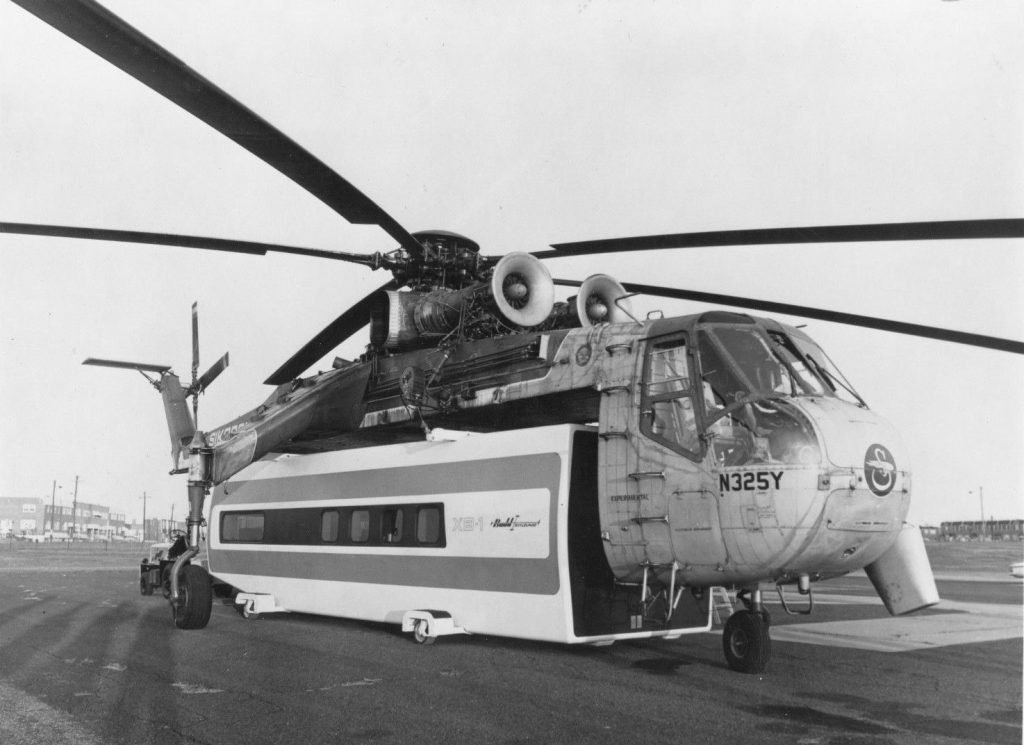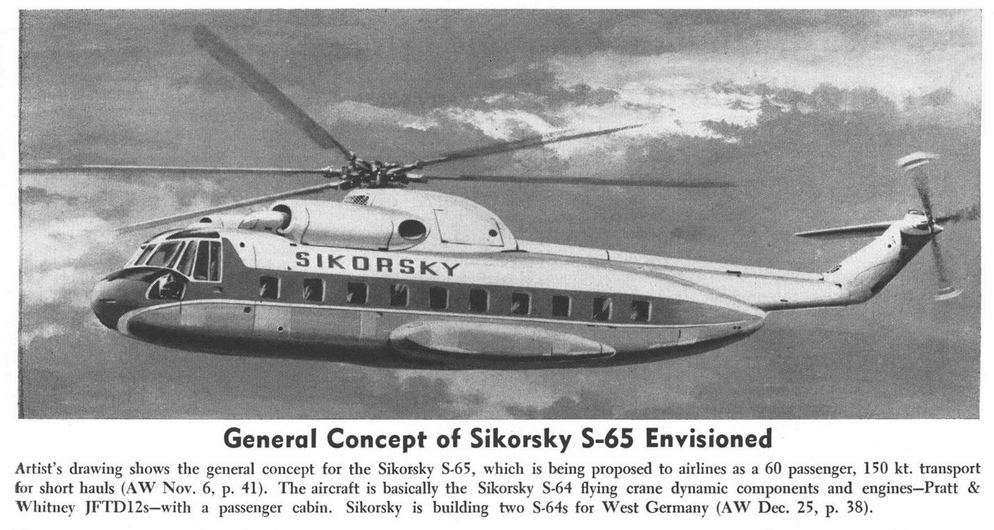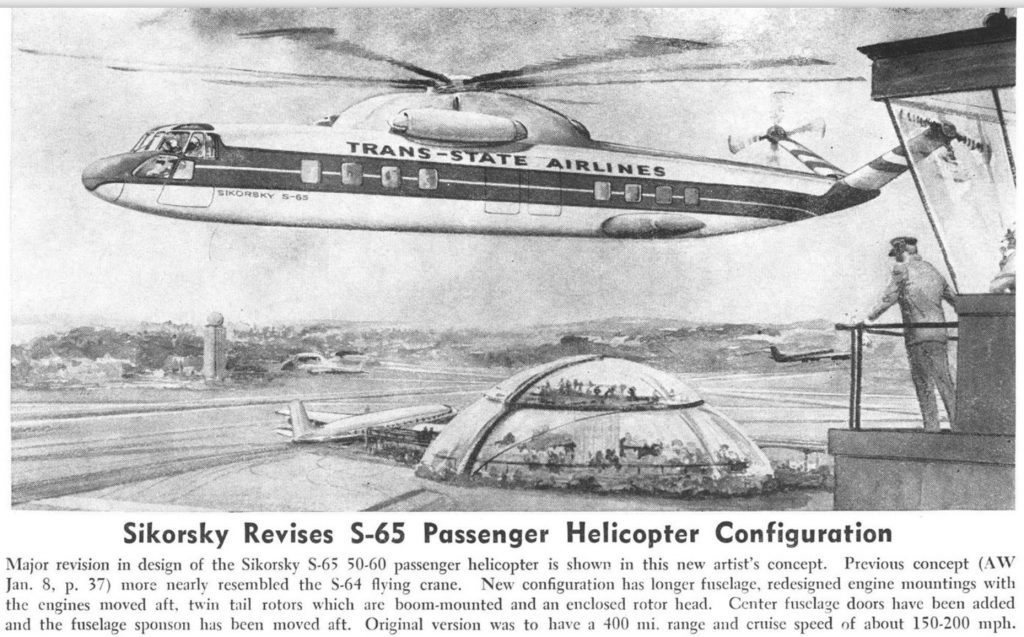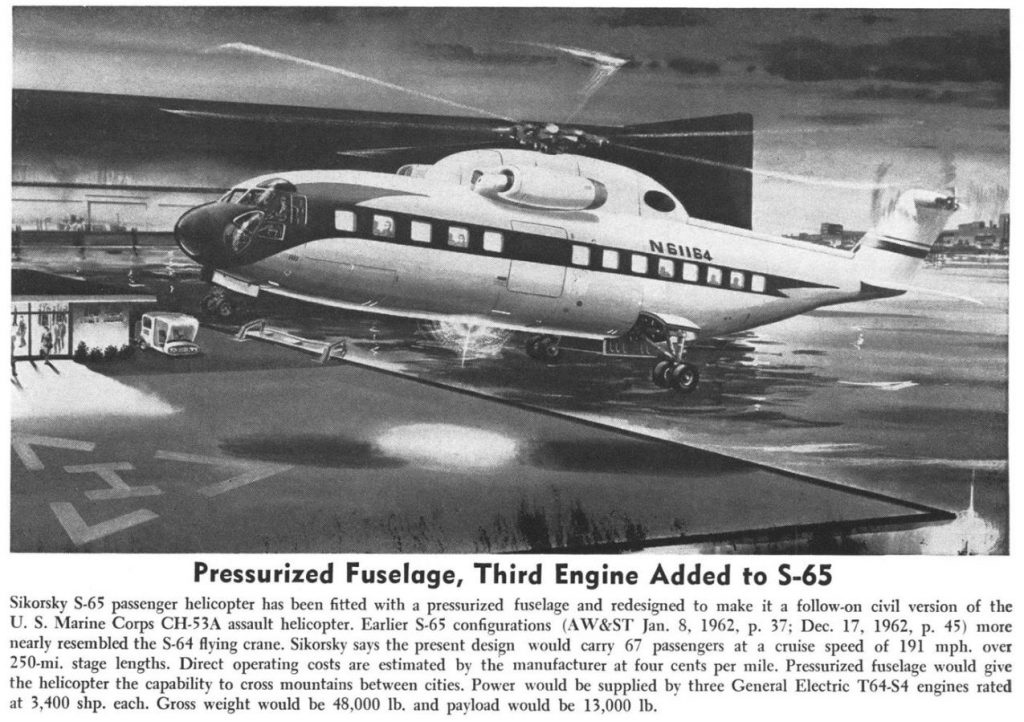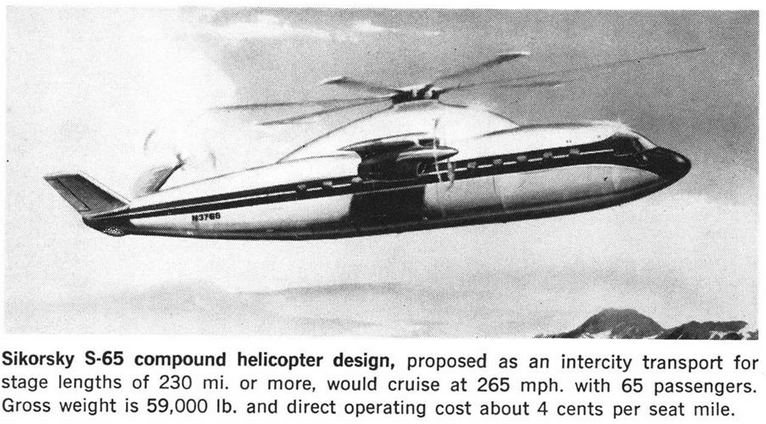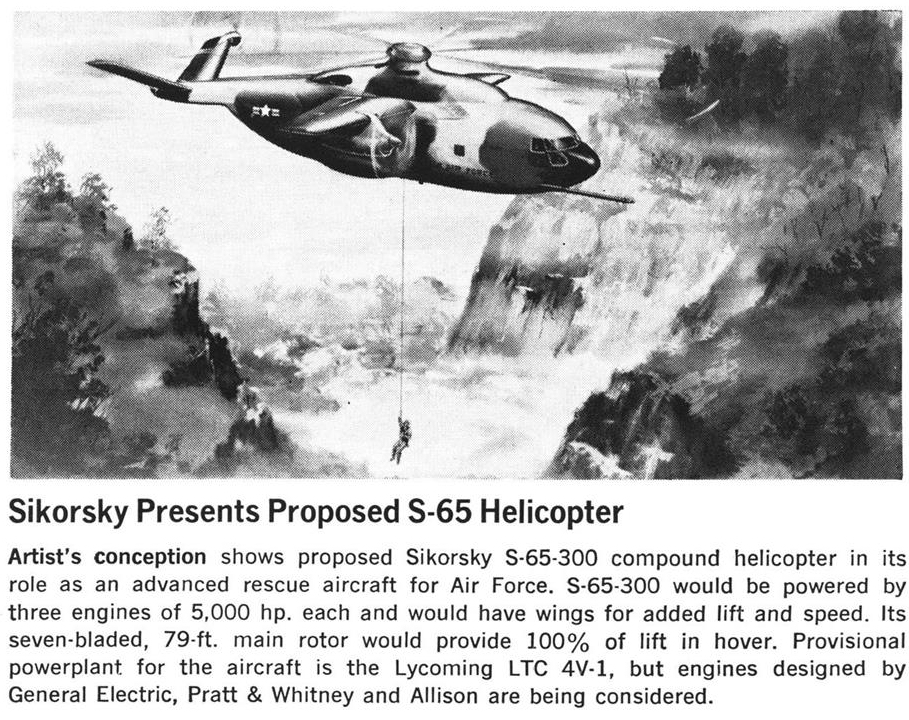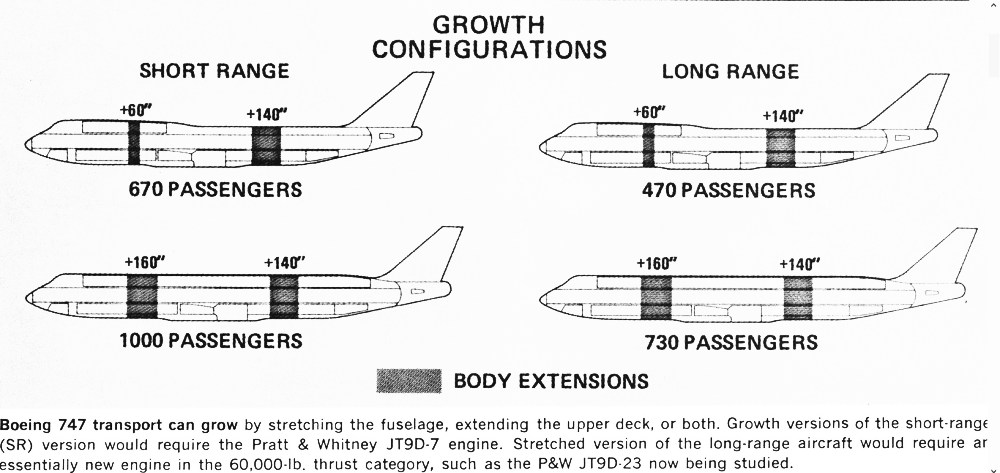A piece of Lockheed concept art circa 1966 depicting a concept for a stowed-rotor helicopter, capable of efficient hovering performance as well as efficient high speed forward flight. This design is related to though distinct from the design depicted in artwork HERE. Note that the backgrounds of the two paintings share a lot of similarities… same ground structures, same leaves in the lower right. I don’t know if this means that one painting was copied from the other, or if one painting was painted *over* the other. In which case… as noted on the other post, I actually own that other piece of artwork. Buried under that upper layer of paint might be *this* image. Ain’t no way I’m going to scrape the paint off just to check, but the technology exists to X-Ray it to look for what’s buried underneath. Not that I’m going to do *that* either…
This aircraft is shown operating in Viet Nam, in US Army colors. This would have irritated the hell out of the US Air Force; by 1966, the USAF was to have control of all fixed wing combat aircraft. The role for this aircraft in Viet Nam would have been search and rescue rather than the transport of troops or ground attack, but still the USAF would have objected.
This piece of art came from a magazine article published in 1966. The full article has been scanned and saved as a PDF, made available to all $4 and up APR Patreons and Monthly Historical Document Program subscribers. it has been uploaded to the 2020-01 APR Extras folder on Dropbox for Patreons and subscribers. If interested in this piece or if you are interested in helping to fund the preservation of this sort of thing, please consider becoming a patron, either through the APR Patreon or the Monthly Historical Document Program.

